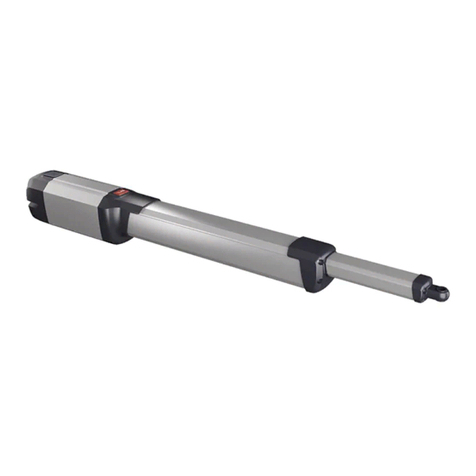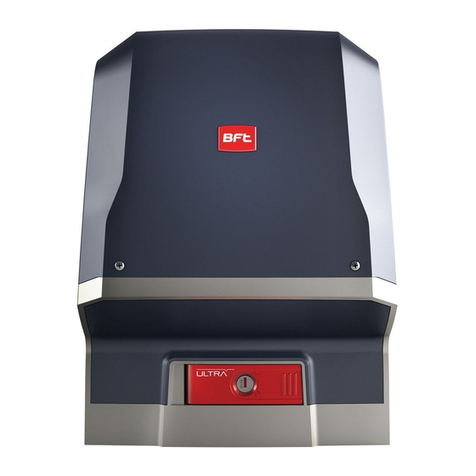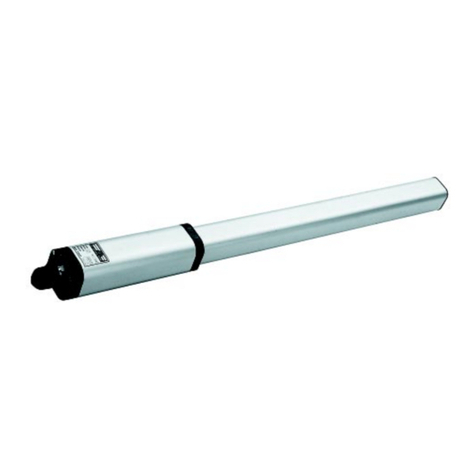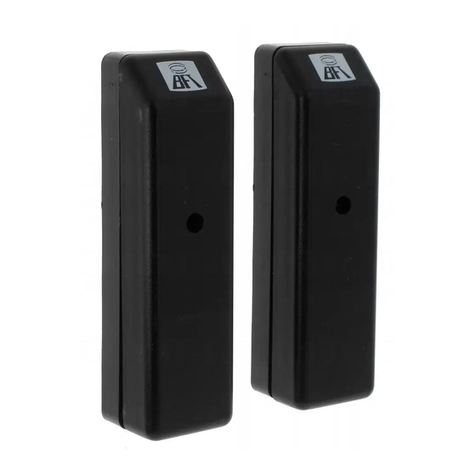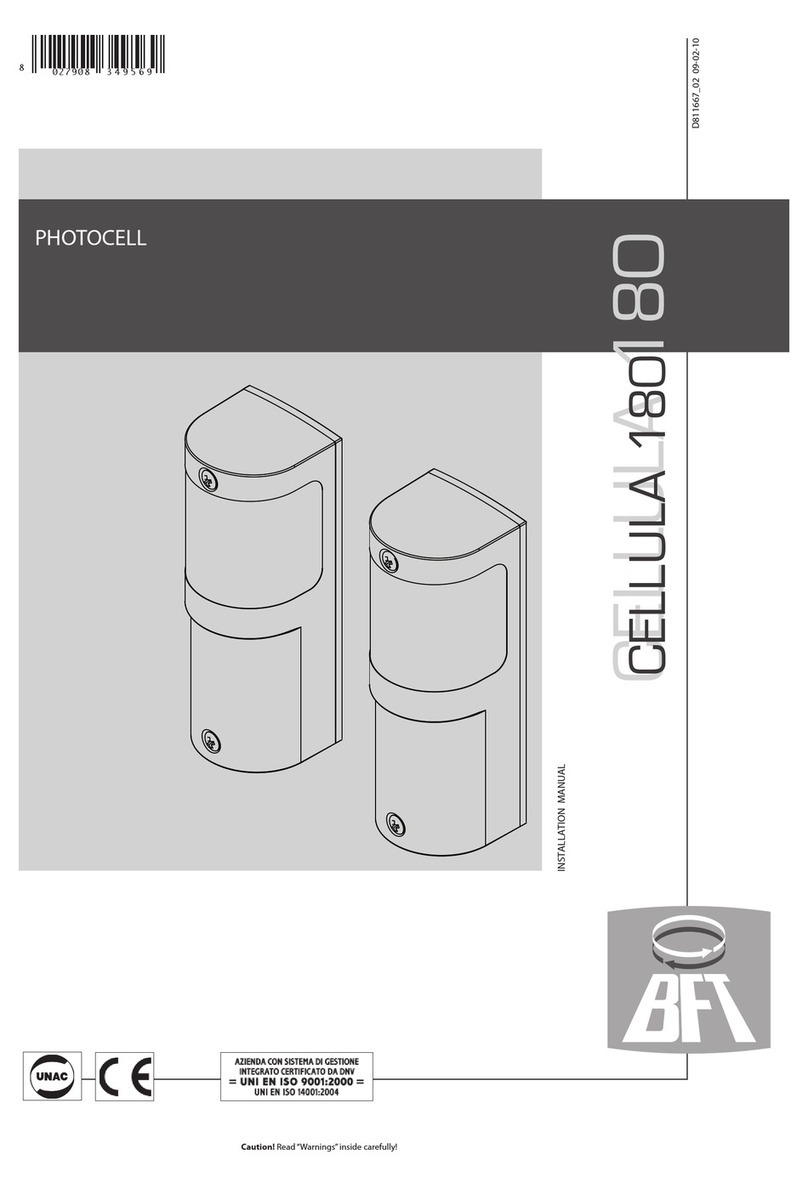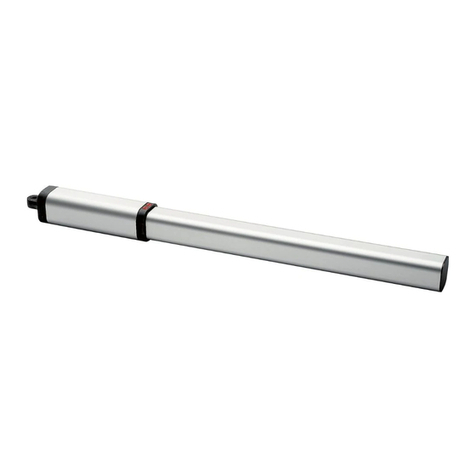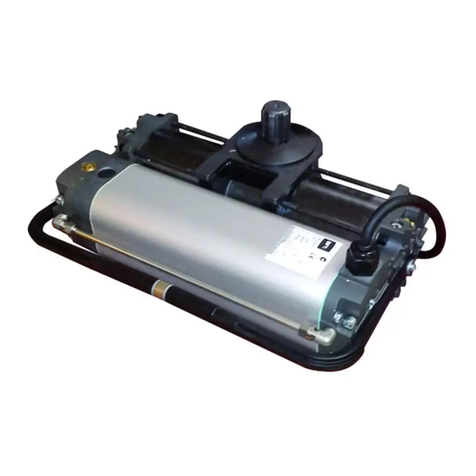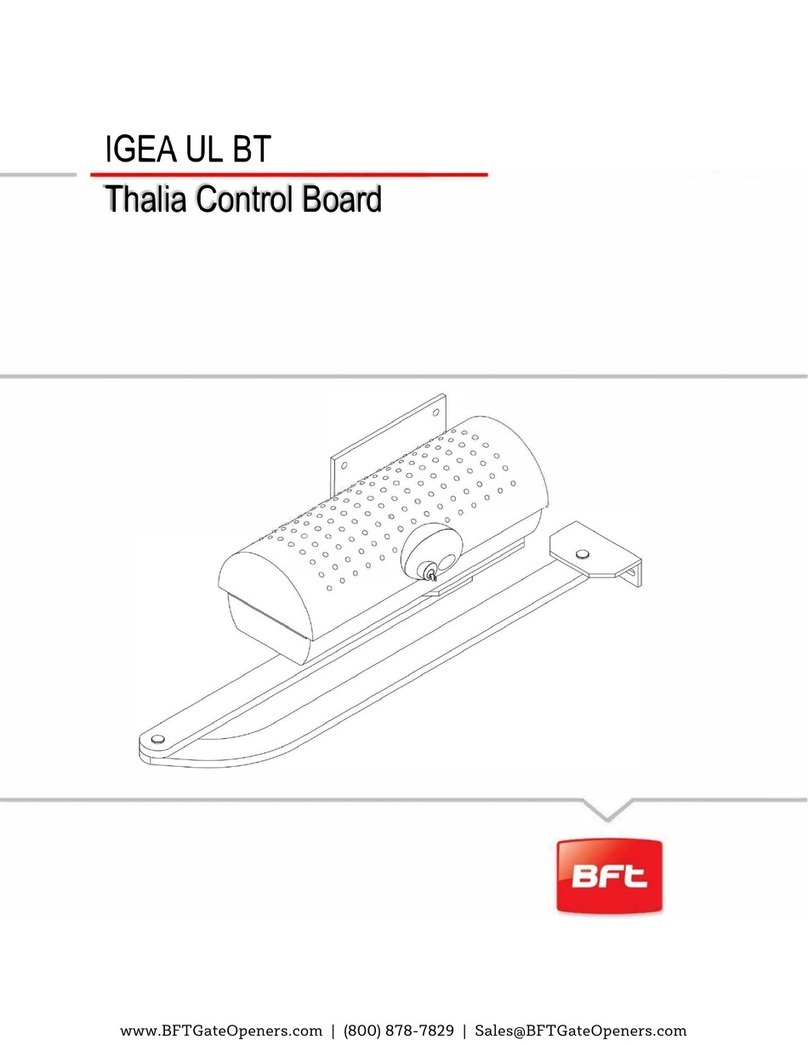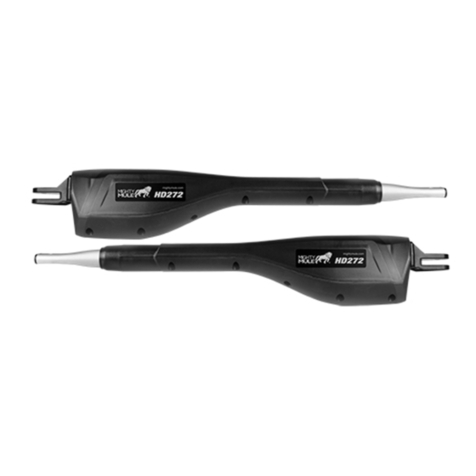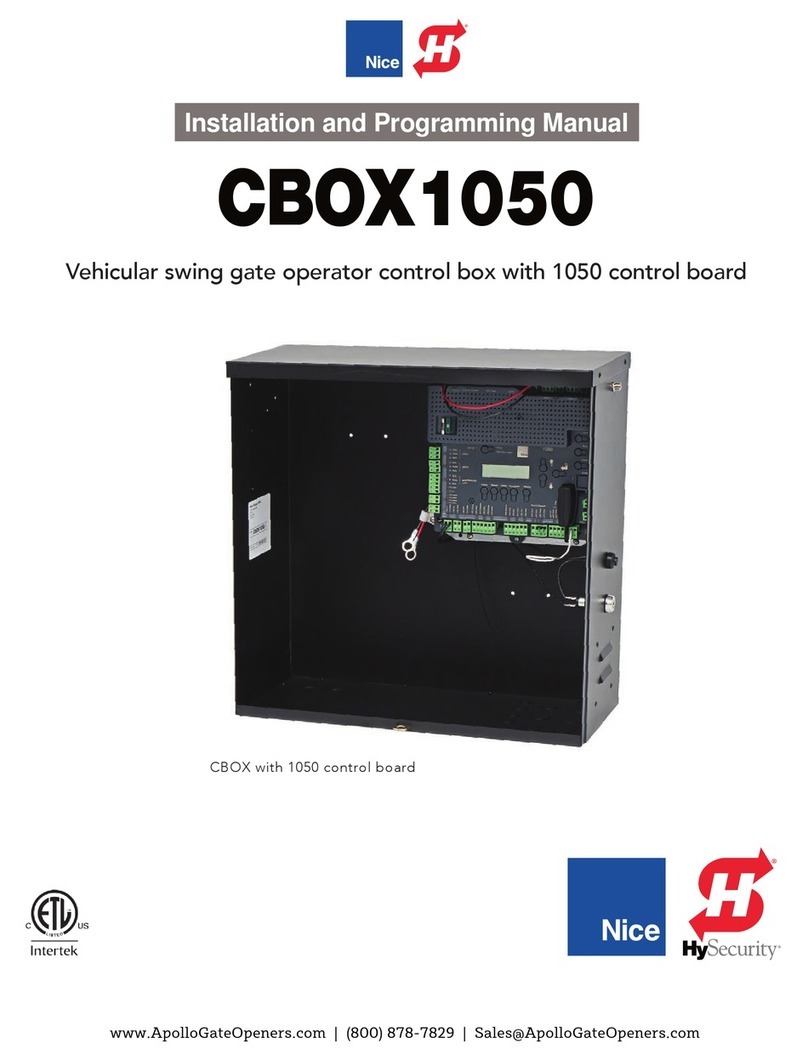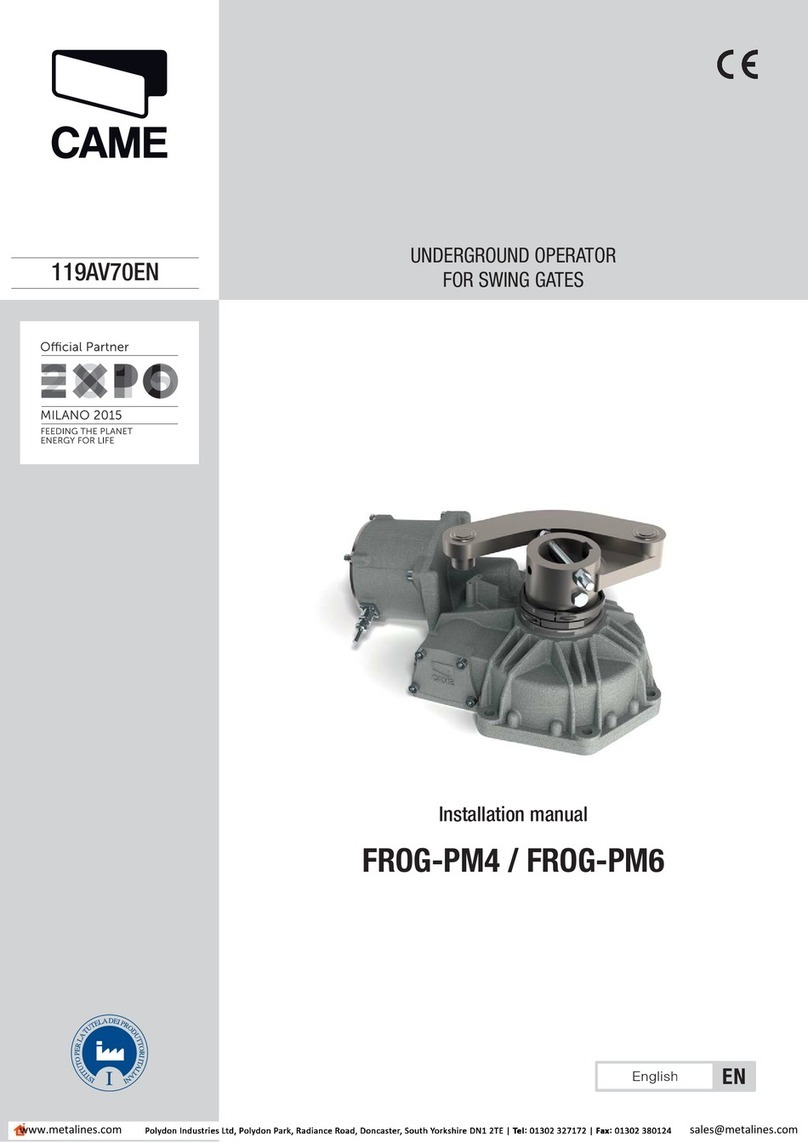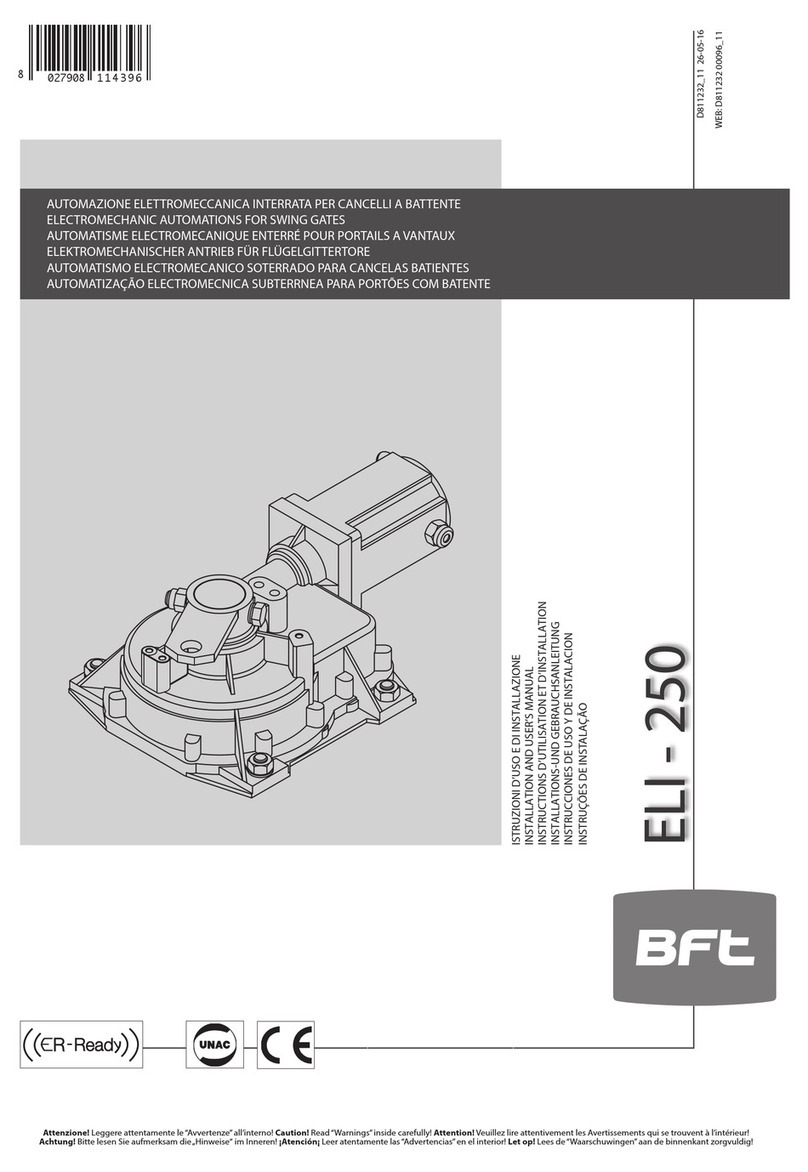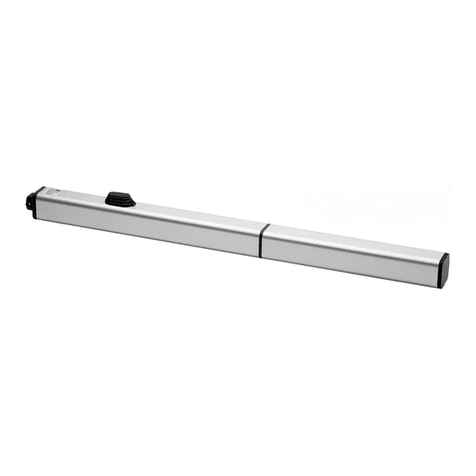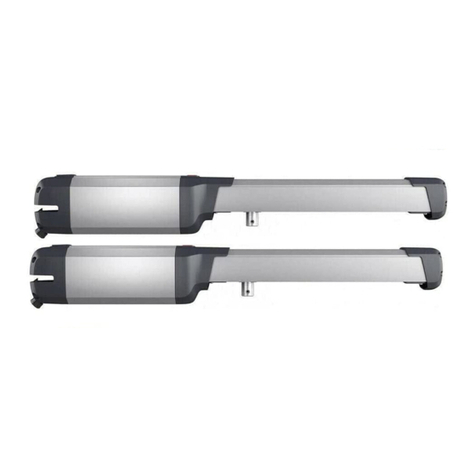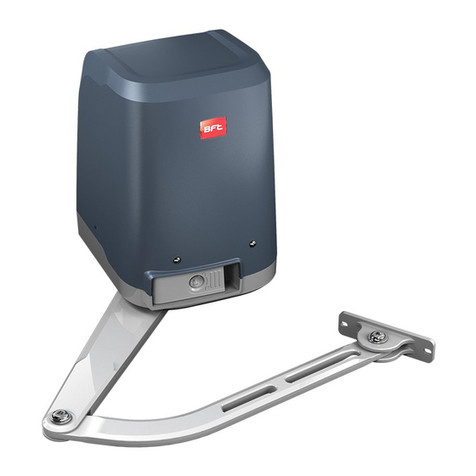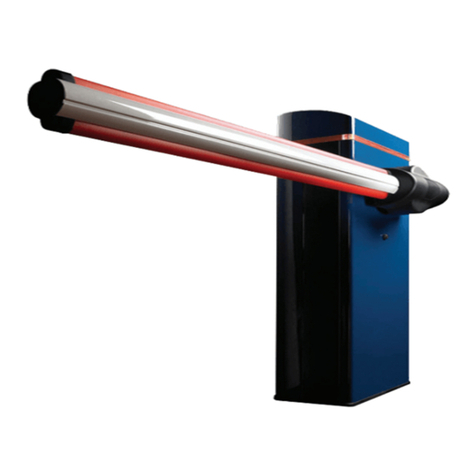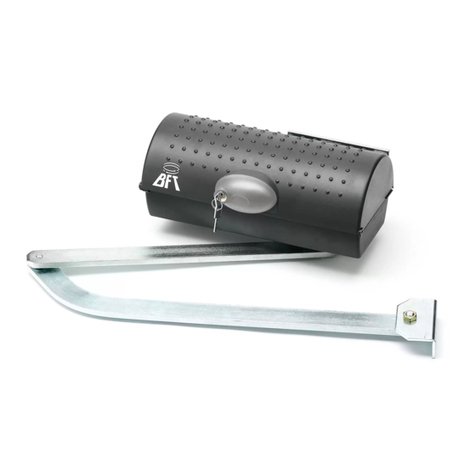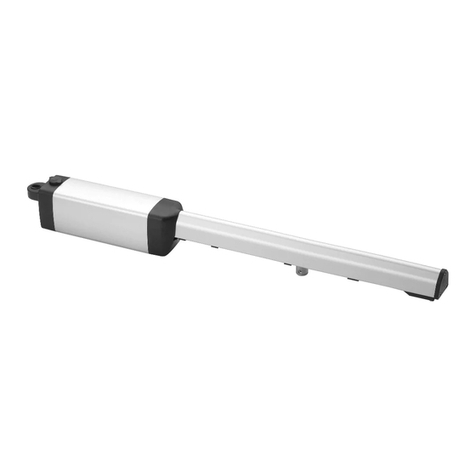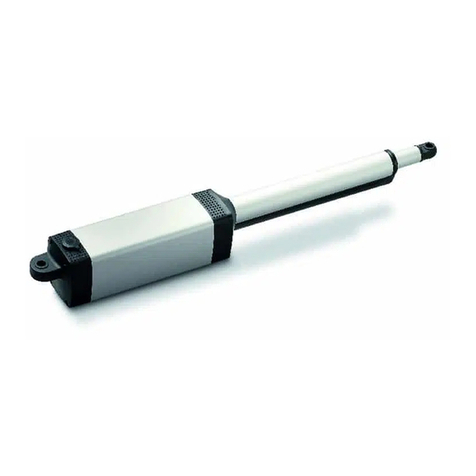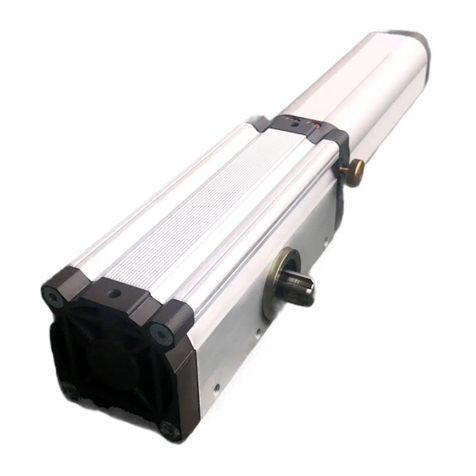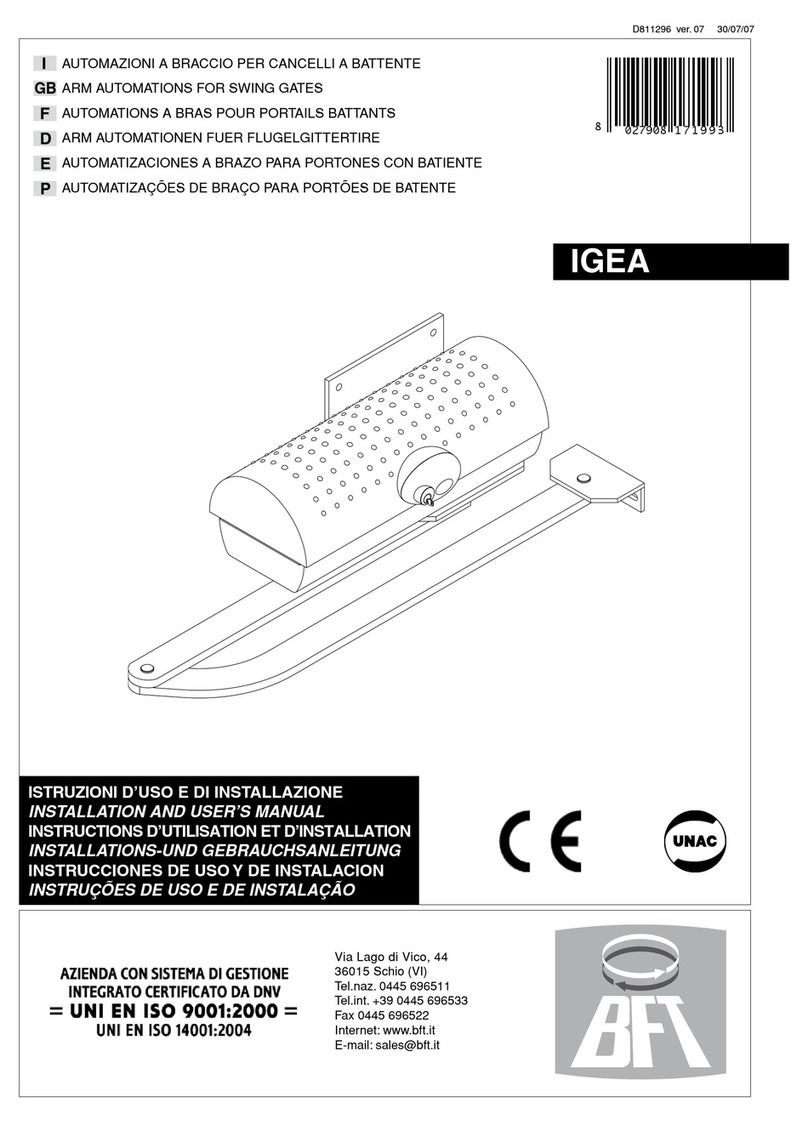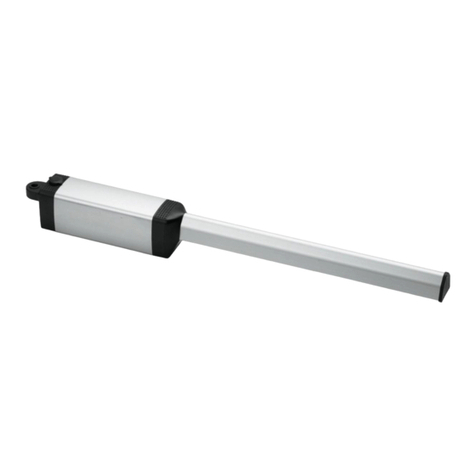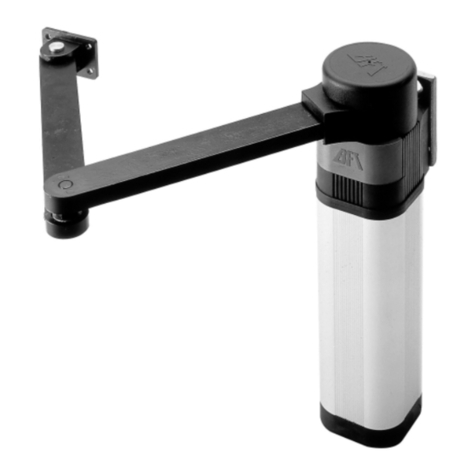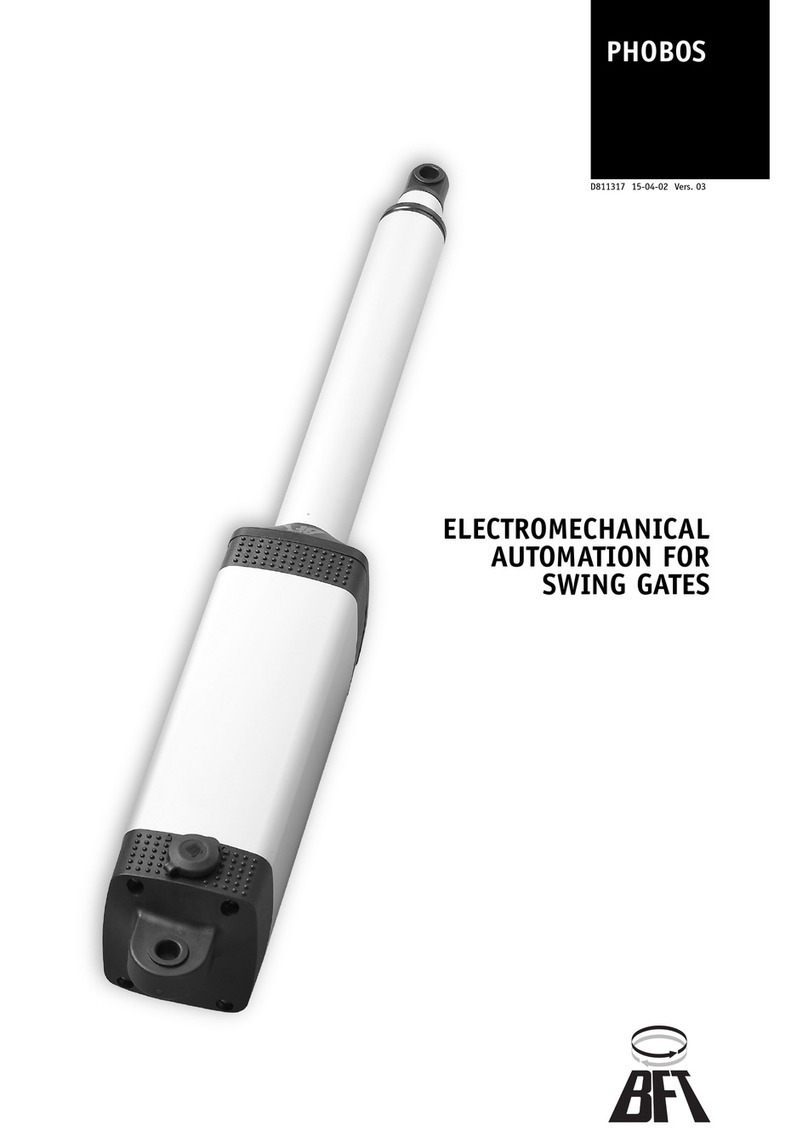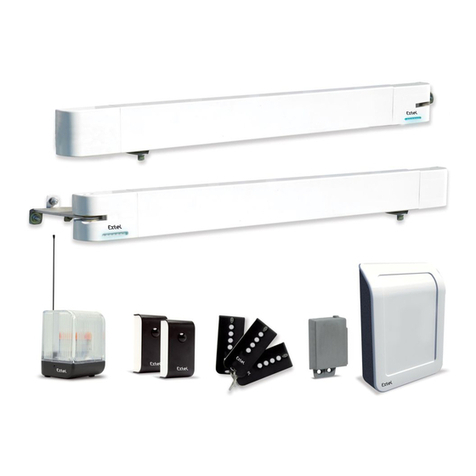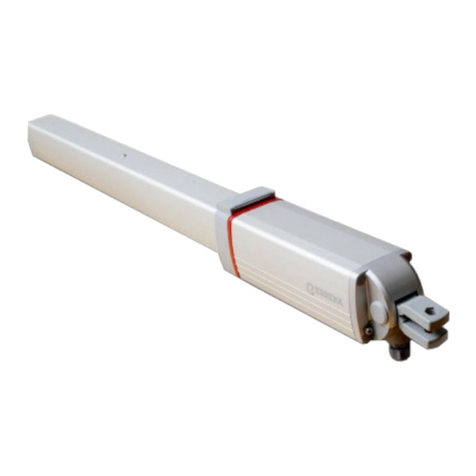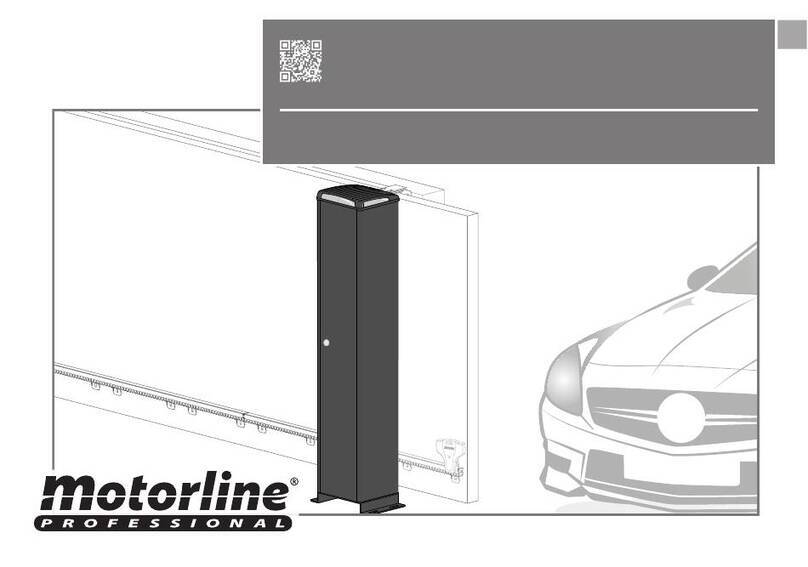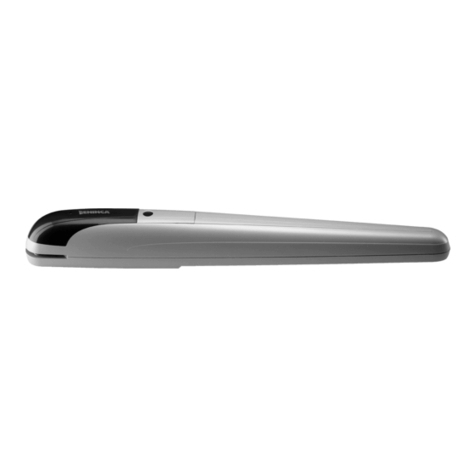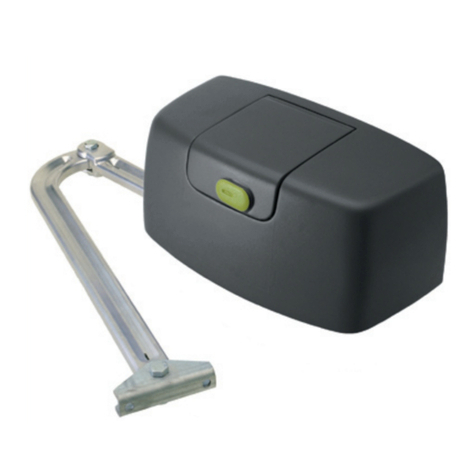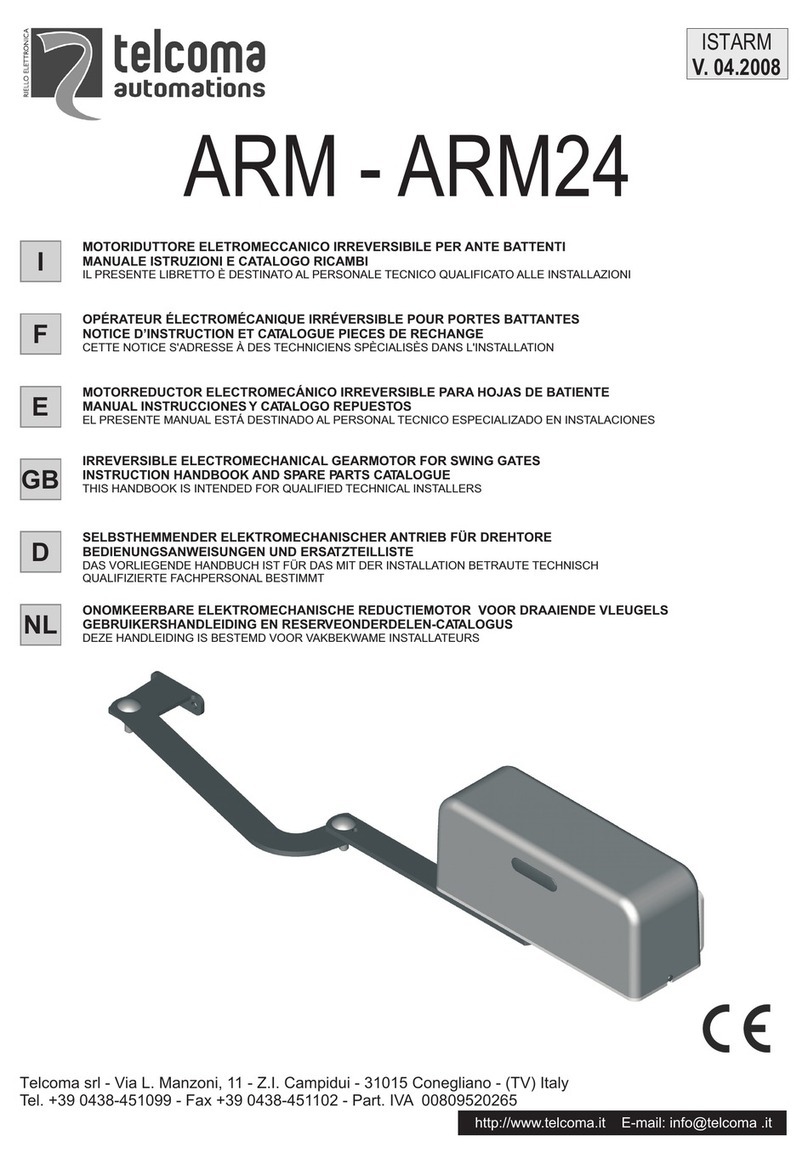
MANUALE PER L’INSTALLAZIONE ITALIANO
Nel ringraziarVi per la preferenza accordata a questo prodotto, la ditta è certa
che da esso otterrete le prestazioni necessarie al Vostro uso.
Leggete attentamente l’opuscolo “AVVERTENZE” ed il “LIBRETTO
ISTRUZIONI” che accompagnano questo prodotto in quanto forniscono
importanti indicazioni riguardanti la sicurezza, l’installazione, l’uso e la
manutenzione.
Questo prodotto risponde alle norme riconosciute della tecnica e della
disposizioni relative alla sicurezza.
Confermiamo che è conforme alle seguenti direttive europee: 89/336/CEE,
73/23/CEE, 98/37/CEE e modifiche successive.
1) SICUREZZA GENERALE
ATTENZIONE! Una installazione errata o un uso improprio del prodotto, può
creare danni a persone, animali o cose.
• Leggete attentamente l’opuscolo ”Avvertenze” ed il ”Libretto istruzioni” che
accompagnano questo prodotto, in quanto forniscono importanti indicazioni
riguardanti la sicurezza, l’installazione, l’uso e la manutenzione.
• Smaltire i materiali di imballo (plastica, cartone, polistirolo, ecc.) secon-
do quanto previsto dalle norme vigenti. Non lasciare buste di nylon e
polistirolo a portata dei bambini.
• Conservare le istruzioni per allegarle al fascicolo tecnico e per consul-
tazioni future.
• Questo prodotto è stato progettato e costruito esclusivamente per
l’utilizzo indicato in questa documentazione. Usi non indicati in questa
documentazione potrebbero essere fonte di danni al prodotto e fonte di
pericolo.
• La Ditta declina qualsiasi responsabilità derivante dall’uso improprio o
diverso da quello per cui è destinato ed indicato nella presente docu-
mentazione.
• Non installare il prodotto in atmosfera esplosiva.
• La Ditta declina qualsiasi responsabilità dall’inosservanza della Buona
Tecnica nella costruzione delle chiusure (porte, cancelli, ecc.), nonché
dalle deformazioni che potrebbero verificarsi durante l’uso.
• L’installazione deve essere in accordo con quanto previsto dalle Direttive
Europee: 89/336/CEE, 73/23/CEE, 98/37/CEE e loro modifiche succes-
sive.
• Togliere l’alimentazione elettrica, prima di qualsiasi intervento sull’im-
pianto. Scollegare anche eventuali batterie tampone se presenti.
• Prevedere sulla rete di alimentazione dell’automazione, un interruttore
o un magnetotermico onnipolare con distanza di apertura dei contatti
uguale o superiore a 3,5 mm.
• Verificare che a monte della rete di alimentazione, vi sia un interruttore
differenziale con soglia da 0.03A.
• Verificare se l’impianto di terra è realizzato correttamente: collegare tutte
le parti metalliche della chiusura (porte, cancelli, ecc.) e tutti i componenti
dell’impianto provvisti di morsetto di terra.
• La Ditta declina ogni responsabilità ai fini della sicurezza e del buon
funzionamento dell’automazione se vengono impiegati componenti di
altri produttori.
• Usare esclusivamente parti originali per qualsiasi manutenzione o ripa-
razione.
• Non eseguire alcuna modifica ai componenti dell’automazione se non
espressamente autorizzata dalla Ditta.
• Istruire l’utilizzatore dell’impianto per quanto riguarda i sistemi di comando
applicati e l’esecuzione dell’apertura manuale in caso di emergenza.
• Non permettere a persone e bambini di sostare nell’area d’azione del-
l’automazione.
• Non lasciare radiocomandi o altri dispositivi di comando alla portata dei
bambini onde evitare azionamenti involontari dell’automazione.
• L’utilizzatore deve evitare qualsiasi tentativo di intervento o riparazione
dell’automazione e rivolgersi solo a personale qualificato.
• Tutto quello che non è espressamente previsto in queste istruzioni, non
è permesso.
• L’installazione deve essere fatta utilizzando dispositivi di sicurezza e
comandi conformi alla EN 12978.
2) GENERALITÀ
Attuatore in bassa tensione (24V) adatto per uso residenziale. Progettato
per cancelli a battente con pilastri di ridotte dimensioni. Il braccio di aziona-
mento, con particolare forma anti-cesoiamento, consente di movimentare
ante quando l’attuatore è notevolmente spostato dal fulcro delle stesse. Il
motoriduttore elettromeccanico irreversibile, mantiene il blocco in chiusura
ed apertura.
La leva di sblocco, presente all’esterno di ogni attuatore, consente di effettuare
la manovra manuale con estrema facilità.
ATTENZIONE! L’attuatore VIRGO non è dotato di regolazione meccanica
di coppia. È obbligatorio utilizzare un quadro di comando del medesimo
costruttore, conforme ai requisiti essenziali di sicurezza delle direttive
73/23/CEE, 89/336/CEE, 98/37/CEE e dotato di adeguata regolazione
elettrica della coppia.
ATTENZIONE! L’installazione, la manutenzione e la riparazione, devono
essere eseguite solo da persone responsabili, professionalmente preparate
ed istruite sulle norme di sicurezza vigenti. È vietata qualsiasi operazione di
manutenzione dell’automatismo con alimentazione elettrica inserita.
Prima di attivare la manovra manuale verificare che ciò non possa causare
una situazione pericolosa.
Verificare nella documentazione che il campo termico dell’ambiente di lavoro
sia adatto all’attuatore.
Verificare che l’intrappolamento fra parti mobili e parti fisse dovuto al movi-
mento della porta siano evitate.
Se è previsto l’utilizzo di cancelli a battente che incorporano porte, il motore
non deve funzionare nel caso la porta rimanga aperta.
ATTENZIONE! L’attuatore deve essere installato da un installatore profes-
sionista in quanto sono necessari dei componenti di sicurezza specifici in
accordo al sito e perciò la sicurezza dipende dall’installazione.
3) DATI TECNICI
3.1) ATTUATORE VIRGO
Motore: ...........................................................................24Vd.c.2500 min-1
Potenza: ...............................................................................................40W
Classe isolamento: .................................................................................... F
Lubrificazione: ..............................................................Grasso permanente
Rapporto di riduzione: ..................................................................... 1÷1224
Giri albero uscita: ..................................................................... 2 min-1 MAX
Tempo di apertura 90°: ...........................................................................14s
Coppia fornita: ................................................................................170 Nm
Peso e lunghezza max anta: ........2000N (~200kg) per lunghezza anta 2m
Reazione all’urto: .......................................... Limitatore di coppia integrato
su quadro di comando LINX
Trasmissione del moto: .......................................................... Braccio a leve
Arresto: .......................... Finecorsa elettrici incorporati + blocchi meccanici
Manovra manuale: .....................................Leva di sblocco con chiave CLS
Numero di manovre in 24h: ..................................................................... 60
Condizioni ambientali: ............................................................-15 ÷ + 50° C
Grado di protezione: .............................................................................IPX4
Peso attuatore: ...................... VIRGO:80N (~8kg) - VIRGO SQ:60N (~6kg)
Dimensioni: ....................................................................................Vedi fig.1
3.2) QUADRO COMANDI LINX
Alimentazione: ..........................................................230Va.c. ±10% 50Hz*
Isolamento rete/bassa tensione: .................................... > 2MOhm 500Vdc
Temperatura di funzionamento .............................................. -15 ÷ + 50° C
Rigidità dielettrica: .......................................rete/bt 3750Va.c. per 1 minuto
Corrente uscita motore: ......................................................3.5A+3.5A max
Corrente di commutazione relè motore: ............................................... 10A
Potenza massima motori: ..................................................... 40W (24Vd.c.)
Alimentazione accessori: ................... 24Va.c. (180mA assorbimento max)
24Va.c.safe (180mA assorbimento max)
Spia cancello aperto: ................................ Contatto N.O. (24Va.c./1A max)
Lampeggiante: ................................................................ 24Va.c. 25W max
Dimensioni: ..............................................................................vedi figura 1
Fusibili: ....................................................................................vedi fig.9-15
(* altre tensioni disponibili a richiesta)
3.3) KIT BATTERIE VIRGO BAT (OPZIONALE - Fig.14)
Consente il funzionamento dell’automazione anche se manca per un breve
periodo l’alimentazione di rete.
Tensione di carica: ........................................................................ 27.2Vd.c.
Corrente di carica: ............................................................................ 130mA
Dati rilevati alla temperatura esterna di: .............................................. 25°C
Capacità batteria: ................................................................ 2x (12V 1.2Ah)
Soglia protezione batteria scarica: ............................................... 20.4Vd.c.
Tempo di ricarica batteria: ............................................................... 12/14 h
NOTA: Nel caso di funzionamento con batteria tampone le uscite ai morsetti
8-9 (Vsafe 24Va.c.) e 10-11 (Vsafe 24Va.c.) presentano una tensione di
24Vd.c. polarizzata come indicato in Fig.16.
Verificare al momento dell’installazione del Kit VIRGO BAT la corretta con-
nessione dei dispositivi di sicurezza.
Le batterie devono essere rimosse prima del suo smaltimento.
Le batterie devono essere rimosse in modo sicuro.
4) INSTALLAZIONE DELL’AUTOMAZIONE
4.1) Verifiche preliminari
Controllare che:
• Che la struttura del cancello sia sufficientemente robusta e rigida.
La posizione di fissaggio deve essere valutata secondo la struttura
VIRGO Ver. 05 - 9
D811415_05

